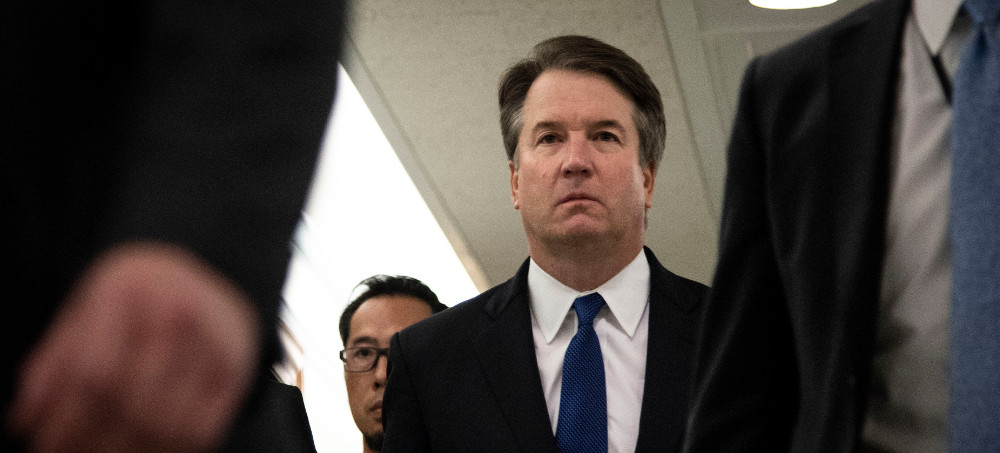Live on the homepage now!
Reader Supported News
It looks like Senator Sheldon Whitehouse will see to it that he does.
Heretofore, Wray and the FBI have relied upon a now 11-year-old Memorandum of Understanding that they said limited the Bureau’s ability to conduct such an investigation. But, as The Guardian reports, this cover may be a threadbare one.
The FBI said in its letter to two senators – Sheldon Whitehouse and Christopher Coons – that the FBI did not have the authority under the 2010 MOU at the time to “unilaterally conduct further investigative activity absent instructions from the requesting entity”. In other words, the FBI has said it would have required explicit instructions from the Trump White House to conduct further investigation under the existing 2010 guidelines on how such investigations ought to be conducted.
But an examination by the Guardian of the 2010 MOU, which was signed by the then attorney general, Eric Holder, and then White House counsel, Robert Bauer, does not make explicitly clear that the FBI was restricted in terms of how it would conduct its investigation. The MOU, which was released in court documents in 2019 as part of Freedom of Information Act litigation brought against the US government by Buzzfeed, also does not explicitly state that the White House had the power to set the process parameters on any investigation. The MOU does seem to suggest that the White House had the authority to limit the FBI to investigate particular issues and questions.
One of the senators bulldogging this issue is Sheldon Whitehouse, Democrat of Rhode Island, who’s interested in a number of unresolved issues regarding the Kavanaugh confirmation—including, intriguingly, the questions surrounding the evaporation of Kavanaugh’s heavy personal debts. Whitehouse is pretty clearly out of patience with Wray and with the FBI.
In a statement to the Guardian, Whitehouse, the senator from Rhode Island who has led Democrats’ demand for answers on the investigation, said: “In its years-late response to our questions, the FBI leaned hard on the notion that this MOU limited its authority to be the FBI and investigate wrongdoing. Now that we have the MOU, it’s even harder to understand the Bureau’s excuses for ignoring credible information it received. Director Wray ought to be ready to answer my questions about this episode – I won’t stop asking until he does.”
There’s still a lot that’s hinky about that whole process. It was a fair demonstration, on the part of all concerned, of the concept of protesting too much, especially on the part of the nominee and of the then-Judiciary chairman Senator Lindsey Graham. Unless it gets bogged down on the micro-issues of what the MOU really means, this could really be a show.
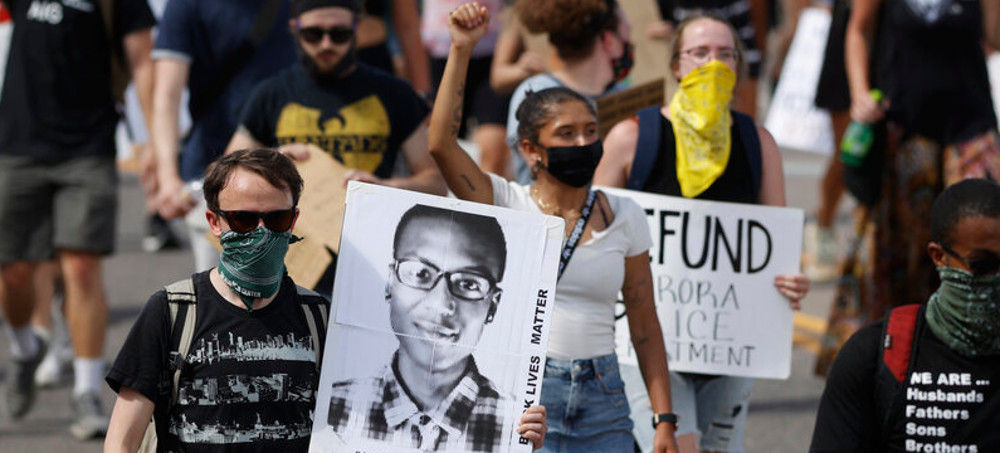 Demonstrators march over the death of Elijah McClain in Aurora, Colo. (photo: David Zalubowski/AP)
Demonstrators march over the death of Elijah McClain in Aurora, Colo. (photo: David Zalubowski/AP)
Attorney General Phil Weiser said the investigation found the department has long had a culture in which officers treat people of color — especially Black people — differently than white people. He said the agency also has a pattern of using unlawful excessive force; frequently escalates encounters with civilians; and fails to properly document police interactions with residents.
"These actions are unacceptable. They hurt the people that law enforcement is entrusted" to serve, he said.
Weiser urged the police department to commit to recommended reforms in officer training, its policies on use of force and especially stricter standards for police stops and arrests. If it fails to do so, he said his office will seek a court order compelling the department to do so — but he noted that the department fully cooperated in the investigation.
Police stopped McClain, a 23-year-old massage therapist, as he walked home from a store on Aug. 24, 2019, after a 911 caller reported a man wearing a ski mask and waving his hands who seemed "sketchy."
Officers put McClain in a chokehold and pinned him down. Paramedics injected him with 500 milligrams of ketamine, an amount appropriate for someone 77 pounds (35 kilograms) heavier than McClain's 143-pound (64-kilogram) frame, according to an indictment. He fell unconscious, was pronounced brain-dead at a hospital, and was taken off life support.
The state civil rights probe, announced in August 2020, was the first of its kind under a sweeping police accountability law passed in Colorado the month before amid protests over the killings of McClain and George Floyd.
Weiser said his office wants a state agreement with Aurora, called a consent decree, to be submitted to a court. The decree would specify what the city and department must do to fulfill his investigation's recommendations.
Sheneen McClain, the single mother who raised Elijah, said she participated in the state investigation, welcomed its findings and urged the police department to work with Weiser's office.
"It's just terrible that it takes my son's death for Aurora police to change what they've been doing for a long time in this community," she said. "Front and center: Elijah would still be here if the system was operating like it should. My son's death was preventable and it's really sad that it took all this to get justice done and make sure it won't happen to someone else."
"The report confirms what many Aurora residents already know: Aurora's police department has a longstanding culture of violence and bias," said Sheneen McClain's attorney, Qusair Mohamedbhai.
The Colorado police accountability law made it unlawful for police officers or other employees of government agencies to deprive people of their constitutional rights and gave the attorney general the power to enforce it.
Under the law, if the attorney general finds an agency has "a pattern or practice" of violating people's rights, the attorney general must notify the agency of the reasons for that belief and give it 60 days to make changes. If the agency does not make changes, the attorney general can file a lawsuit to force them.
Weiser's office is also prosecuting three police officers and two paramedics on manslaughter, criminally negligent homicide and assault charges in McClain's death. He convened a grand jury to decide whether to file criminal charges after being ordered to take another look at the case by Democratic Gov. Jared Polis amid last year's protests.
The grand jury indicted all five.
The Aurora Police Department also faced criticism when officers put four Black girls on the ground last year and handcuffed two of them next to a car that police suspected was stolen but turned out not to be.
And an officer was charged with assault in July after being captured on body camera video pistol-whipping and choking a Black man during an arrest. Another officer was charged with not intervening as required under the new police accountability law.
McClain's parents have filed a lawsuit alleging that police treatment of McClain was part of a pattern of racially biased policing that has involved aggression and violence against Black people.
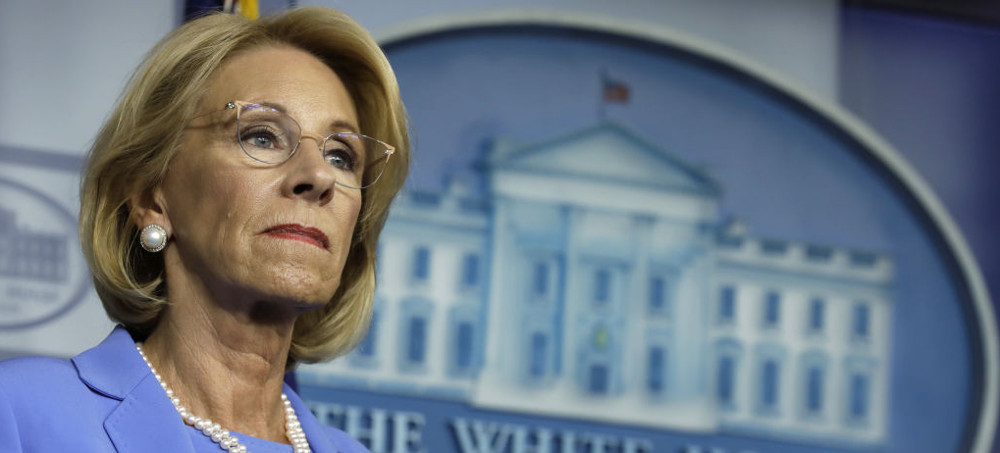 Betsy DeVos listens during a Coronavirus Task Force news conference at the White House on March 27, 2020. (photo: Yuri Gripas/Getty)
Betsy DeVos listens during a Coronavirus Task Force news conference at the White House on March 27, 2020. (photo: Yuri Gripas/Getty)
In Los Angeles, Betsy DeVos is using the chaos of COVID-19 to push a voucher scheme that would force public schools to compete for students to stay open. After conquering LA, DeVos and friends aim to take the plan nationwide.
Not content to retire from the school privatization business, Donald Trump’s secretary of education, Betsy DeVos, has teamed up with the American Legislative Council (ALEC) to pilot a new school voucher scheme in Los Angeles. The plan would send funds directly to school sites instead of ensuring a centrally enforced foundation of programs, educators, and staff at every school. This restructuring of allocations would set a precedent that could be duplicated across the nation.
If the Los Angeles School Board passes the plan at its meeting tomorrow, funding for each school would be determined by calculating a specific dollar amount for every student in the district, with differing dollar amounts assigned based on individual student characteristics such as disability and language status. Wherever the student attends, their “backpack of cash” would go with them. Under-attended schools would thus be vulnerable to underfunding and closure.
Currently, schools receive a baseline of staff, programs, and supplies that ensures the school can stay operational and provide adequate educational services. If DeVos’s plan passes, they would primarily receive money based on enrollment instead. Like privately owned businesses competing for customers, schools would have to compete for students in order to stay afloat. Schools struggling with enrollment numbers would have to make cuts to educational programs, and/or eventually close. After implementation of Chicago’s school voucher plan, the number of school librarians in the city plummeted from 460 to 123 in less than ten years.
The Los Angeles Unified School District (LAUSD) would be the first and only district in the nation to bundle their federal funds into these unique “backpacks of cash,” but the nonlocal actors pushing the plan are hoping it won’t be the last. The potential passage of the plan in Los Angeles therefore has implications for the future of public education nationwide.
When Chicago enacted its version of a school voucher system, the scheme shuttered neighborhood public schools left families to fend for themselves.
“This is an attack on kids of color and minority communities,” said Chicago Public Schools student Styles Avant Pinkston in conversation with the organization We Are Public Schools. “You never hear about schools in wealthy white neighborhoods shutting down — they invest in those schools. Schools can be turned around if they want to. If they see value in doing that. They just don’t see the value in those communities. The way to change this, you have to fund. You don’t hear about white schools closing. If it’s struggling, they get resources. They aren’t allowed to fail.”
Textbook Disaster Capitalism
In Los Angeles, proponents of the DeVos-backed voucher scheme are bringing it for a vote while LAUSD teachers, staff, students, and families are navigating challenging school reopenings in the midst of the Delta variant surge. The pandemic has been devastating and disorienting for many LAUSD families and educators, which has created an opportunity for privatizers to advance the Student Centered Funding (SCF) plan without much notice.
It’s a standard technique. In her book The Shock Doctrine, Naomi Klein describes the process of private interests taking advantage of natural disasters to push their agendas, a phenomenon she calls “disaster capitalism.” While working-class people are at their most vulnerable and disorganized, privatizers are able to drain tax dollars out of public goods and funnel them into the private sector with minimal opposition. Within a year of the devastation of Hurricane Katrina in New Orleans, for example, all traditional neighborhood public schools were closed, and it became the most privatized school system in the United States. Charter schools now dominate New Orleans.
LAUSD’s democratically elected school board has not made a decision on the plan, but looking at the district’s website gives a different impression. The district appears to present SCF as an active policy, rather than a proposal pending passage by the school board. The board of the second largest school district in the country appears to have already lined up behind the plan and is shirking transparency at best.
Los Angeles public schools are already under heavy fire from education privatizers. One of the nation’s most proactive and effective proponents of charter schools, the late billionaire Eli Broad, was a Los Angeles resident and routinely pressed his thumb on the scale of local education policy. As of last year, Los Angeles had 277 charter schools, more than any school district in the nation. In addition to taking funds from neighborhood public schools, which serve predominantly working-class students and families of color, charters have a history of mismanagement of public dollars, lack of accountability to taxpayers, and are shown to increase racial segregation in schools.
Now it appears that privatizers are swiftly advancing on another frontier in their war on neighborhood public schools — and their opposition is disorganized. The voucher plan is being pushed at a time when pediatric hospitalizations have reached new heights, especially since children under the age of twelve cannot get vaccinated, causing fear and confusion for students, parents, and teachers. Meanwhile, families that depend the most on traditional neighborhood public schools have been focused on navigating the economic realities of the pandemic, including an increase in the cost of living, job loss, impending evictions, and the difficulties of securing safe childcare.
The city’s teacher’s union, the United Teachers of Los Angeles (UTLA), is calling on teachers and parents to oppose the voucher scheme. Last Friday, parents, teachers, and students held a press conference at Monroe High School to call on school board president Kelly Gonez to vote no on SCF.
“It threatens everything that makes our school work,” said an LAUSD parent named Felicidad who spoke at the press conference. “Title-I programs would be at risk. My child is not a backpack full of cash. My child and every student deserves a well-funded school.”
Betsy DeVos and friends are hoping that Los Angeles parents and teachers won’t be able to muster enough opposition to compel the school board to vote down the plan. But if any city can overcome the odds to beat back disaster capitalism, it might be Los Angeles, which has a recent history of militancy in defense of public education.
Fifty thousand educators, parents, and supporters flooded the streets during the 2019 Los Angeles teachers’ strike. For the sake of public education in Los Angeles and beyond, opponents of the voucher plan will need to harness some of that fighting energy again.
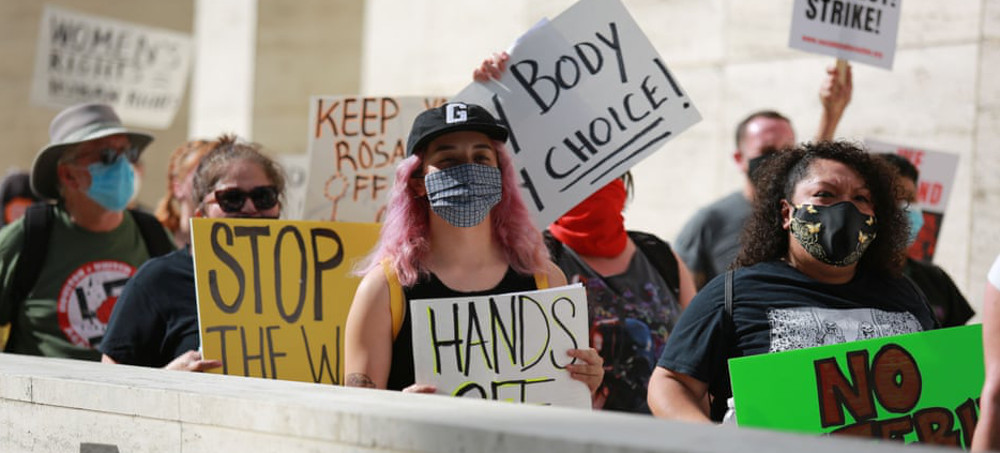 Protesters march from city hall to the federal court house in protest against the new state abortion law, in Houston. (photo: Reginald Mathalone/Shutterstock)
Protesters march from city hall to the federal court house in protest against the new state abortion law, in Houston. (photo: Reginald Mathalone/Shutterstock)
 A worker in front of her sewing machine at the Nana Atelier factory in Boyle Heights, Los Angeles, 14 June 2021. (photo: Noemie Taylor-Rosner)
A worker in front of her sewing machine at the Nana Atelier factory in Boyle Heights, Los Angeles, 14 June 2021. (photo: Noemie Taylor-Rosner)
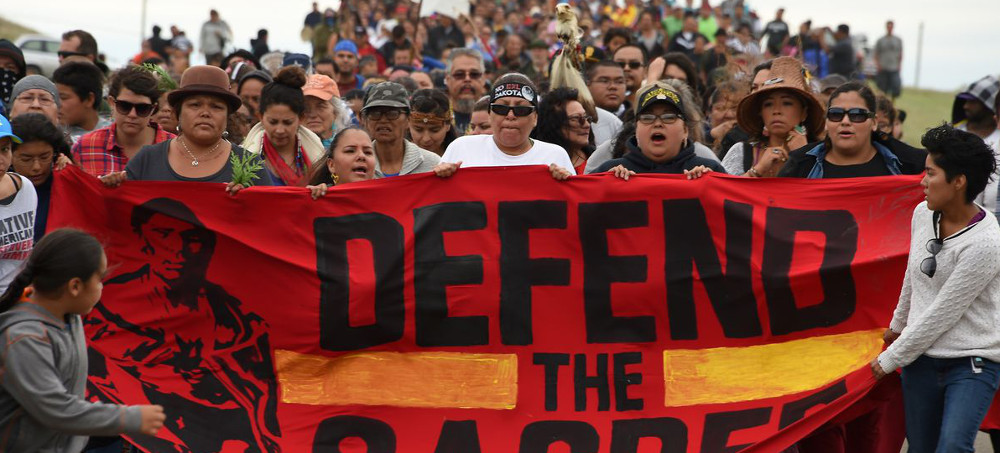 Indigenous-led Standing Rock pipeline protest. (photo: Robyn Beck/AFP)
Indigenous-led Standing Rock pipeline protest. (photo: Robyn Beck/AFP)
That's the pollution equivalent of approximately 400 new coal-fired power plants.
This is despite an onslaught of attacks against Indigenous activists over the past few years. Over the last few years, victories won against projects through direct actions have led to more than 35 states enacting anti-protest laws, jail time for protestors, thousands of dollars of fines, and even the killing of prominent activists.
In the face of criminalization and demonization of those fighting to move beyond fossil fuel use, Indigenous resistance can show us a way out, says Dallas Goldtooth, an organizer with IEN, an alliance of Indigenous peoples who believe in adhering to Indigenous knowledge and natural law.
“Our movements are stronger when we connect the dots,” he told Grist. “What Indigenous peoples are providing is a roadmap for our allies and supporters to adopt as a way to address the climate crisis.”
Indigenous rights and responsibilities, the report explains, “are far more than rhetorical devices — they are tangible structures impacting the viability of fossil fuel expansion.” Through physically disrupting construction and legally challenging projects, Indigenous resistance has directly stopped projects expected to produce 780 million metric tons of greenhouse gases every year and is actively fighting projects that would dump more than 800 million metric tons of greenhouse gases into the atmosphere every year.
The analysis, which used publicly released data and calculations from nine different environmental and oil regulation groups, found that roughly 1.587 billion metric tons of annual greenhouse gas emissions have been halted. That’s the equivalent pollution of approximately 400 new coal-fired power plants — more than are still operating in the United States and Canada — or roughly 345 million passenger vehicles — more than all vehicles on the road in these countries.
“From an Indigenous perspective, when we are confronting the climate crisis we are inherently confronting the systems of colonization and white supremacy as well,” Goldtooth said. “In order to do that, you have to reevaluate how you relate to the world around you and define what your obligations are to the world around you. It’s more than just stopping fracking development and pipelines and it’s more than just developing clean energy, it’s about actually fundamentally changing how we see the world itself.”
The report and data analysis by Goldtooth, Alberto Saldamando, and Tom Goldtooth of IEN and Kyle Gracey and Collin Rees of OCI, is meant to dispel the myth that land defenders and those on the frontlines of the struggles against fossil fuel projects are not making an impact. The work is cause to celebrate, Goldtooth says.
“When you take a step back and look at the work that Indigenous peoples have put in over the years and decades, it really goes to show that we collectively are making a tremendous impact for the benefit of this planet,” Goldtooth told Grist.
“It backs up what we’ve constantly been saying,” he added, “recognizing Indigenous Rights protects the water, protects the land, and protects our futures.”
Deliberately the report highlights both major fights, such as the victory against the Keystone XL pipeline and the ongoing fights against the Dakota Access and Line 3 pipelines, and lesser-known battles taking place against the Mountain Valley Gas Pipeline in West Virginia and the Rio Grande liquified natural gas export terminal in Texas.
“The ultimate hope of the report was to show folks that we are winning, and we can win,” Goldtooth said, “and these struggles are connected and onto themselves are an ecosystem that is paving the way for a better world.”
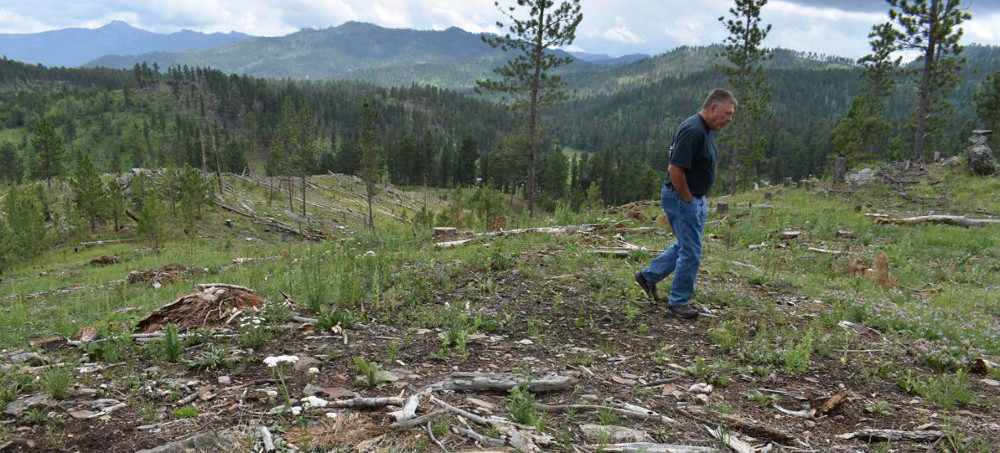 Blaine Cook, a retired US Forest Service management scientist, is seen walking through a logging site in the Black Hills National Forest. (photo: Matthew Brown/AP)
Blaine Cook, a retired US Forest Service management scientist, is seen walking through a logging site in the Black Hills National Forest. (photo: Matthew Brown/AP)
Timber production dramatically ramped up two decades ago in the Black Hills National Forest along the South Dakota-Wyoming border, as beetles ravaged huge expanses of forest and worries grew over wildfires.
The beetles left, but the loggers haven’t — and they're now felling trees at twice the rate government scientists say is sustainable. That means the Black Hills forests are shrinking, with fewer and smaller trees.
Timber sales from federal forests nationwide more than doubled over the past 20 years, according to government data. In Washington, D.C., Republicans and Democrats alike have pushed more aggressive thinning of stands to reduce vegetation that fuels wildfires.
But critics of federal forest management say that in their fervor to do something about climate change, officials are allowing the removal of too many older trees that can actually better withstand fire.
In the Black Hills, stands of century-old ponderosa pines were thinned over the past two decades, then thinned again. In some areas, most of the remaining older and larger trees are being cut, leaving hillsides almost bare.
“Eventually you’re not going to have any big trees on the whole forest,” said Dave Mertz, who worked as a government natural resources officer overseeing Black Hills logging until retiring in 2017. “The timber industry is pulling the strings now. The Forest Service has lost its way.”
DIRE PREDICTIONS
Across the western U.S., more trees have been dying as climate change dramatically alters the landscape and leaves forests more susceptible. Wildfires, insects and disease are the top killers, researchers say.
A sweeping government review of forest health surveys since 1993 found that the rate of trees dying increased this century and outpaced new growth in all eight states examined — Arizona, Colorado, Idaho, Montana, Nevada, New Mexico, Utah and Wyoming. Timber harvested from Forest Service lands over the past two decades also increased.
In the Black Hills, those two trends have collided. With more trees being logged and even more killed by beetles and fires in recent years, government scientists say the forest can’t grow fast enough to keep up.
The timber industry and allies in Congress are pushing back against that conclusion. Timber company representatives predict dire economic consequences if forest managers sharply reduce harvest levels. And they say wildfires and beetle outbreaks would get worse.
One of the region's seven mills closed in March, eliminating 120 jobs in Hill City, South Dakota. Owner Neiman Enterprises said a recent slowdown in timber sales meant it wouldn't have enough logs.
"These companies aren’t tech startups. They are multi-generational family companies that want to be there for the long term.” said Ben Wudtke, director of the Black Hills Forest Resource Association of saw mills and logging companies.
FIGHTING FIRE
To counter growing havoc from western wildfires, Biden's administration wants to double the forest acreage thinned or treated with prescribed burns to 6 million acres (2.4 million hectares) annually — bigger than New Hampshire.
One method to reduce fire risk is to remove dense stands of small trees and thick underbrush that accumulated for decades as wildfires — a natural part of the landscape — were suppressed.
It’s expensive, labor-intensive work, and there’s little market value in small trees. When sworn in this summer, Forest Service Chief Randy Moore said combating climate change will require making it worthwhile to harvest smaller trees, such as using the vegetation as biomass to generate electricity.
“It doesn’t pay for itself and we don’t have markets that seem to be increasing quickly enough," he said.
The service's former deputy chief, Jim Furnish, criticized the agency as too focused on timber production and too slow to react to climate change, to the detriment of the forest.
There are signs of change under President Joe Biden, including the administration’s move last month to end large-scale commercial logging of old-growth trees in Alaska’s Tongass National Forest.
But other projects that include old-growth removal are pending, including in Montana's Kootenai National Forest along the Canada border, the Kaibab National Forest just north of the Grand Canyon in Arizona and Idaho's Nez Perce-Clearwater National Forest.
“The Forest Service’s approach to date has been to attack this as a management problem: ‘We need to cut more trees,'” Furnish told The Associated Press. “You can’t cut your way out of this problem.”
Moore, the agency's chief, acknowledged the warming planet was forcing changes, but said he hoped to find a “sweet spot” between the environment and industry — while removing enough vegetation to reduce wildfire risk. In the Black Hills, officials said they would consider the latest science alongside economic impacts as they seek to make logging sustainable.
“We need the industry to help us,” Moore said, referring to climate change. “It’s not really about timber sales or cutting large trees.”
“BEAT TO HELL”
The Black Hills played an outsized role in the early formation of the nation's timber policies. In the 1890s, excessive logging to feed demand for timbers for a nearby gold mine helped spur creation of the national forest system. The first regulated logging sales in forest service history took place there in 1899.
When artist and environmentalist Mary Zimmerman bought property within the Black Hills in 1988, neighboring public lands where that first timber sale took place had regrown so successfully that huge branches overhead “were like a cathedral.”
The site was thinned in 1990, removing some big trees but leaving many. It was thinned more in 2016. Then logging crews returned last year and took out the remaining big trees. Cattle now graze the area.
“It’s just beat to hell,” said Zimmerman.
Her account was confirmed by Blaine Cook, forest management scientist for the Black Hills for more than two decades until his 2019 retirement.
EARLY WARNINGS
Cook said his monitoring began to show last decade that the forest’s growth rate wasn’t keeping up with aggressive logging that was a response to the pine beetle outbreak that began in 1998. The high harvest rate continued after the outbreak peaked in 2012 and even after it ended in 2017.
Cook said his warnings that the forest was being damaged were rejected by superiors who faced political pressure to provide a steady supply of logs to sawmills in South Dakota and Wyoming.
Disagreement within the agency over whether there was too much logging culminated in a report this April by scientists from the forest service’s research branch that was unequivocal: Black Hills logging needs to be cut back by at least half, possibly more, to be sustainable.
The problem is that the forest changed but logging rates have not, said Mike Battaglia, one of the lead authors.
“In the late 90's, you had twice as much volume” of trees in the forest, he said. “To take out the same amount now, you're taking too much."
Forest industry representatives criticized the government’s multi-year study for including only parts of the forest, saying that created an incomplete picture of how many trees are available to harvest.
They estimated up to 80% of the region’s timber industry jobs would be lost if the forest service reduced logging to recommended levels. If that happens, they said the agency would have difficulty finding companies willing to do less profitable thinning work for wildfire protection.
“You have to have somebody around to do it," said the forest industry's Wudtke. “It's really critical that we keep these companies going."
Follow us on facebook and twitter!
PO Box 2043 / Citrus Heights, CA 95611

